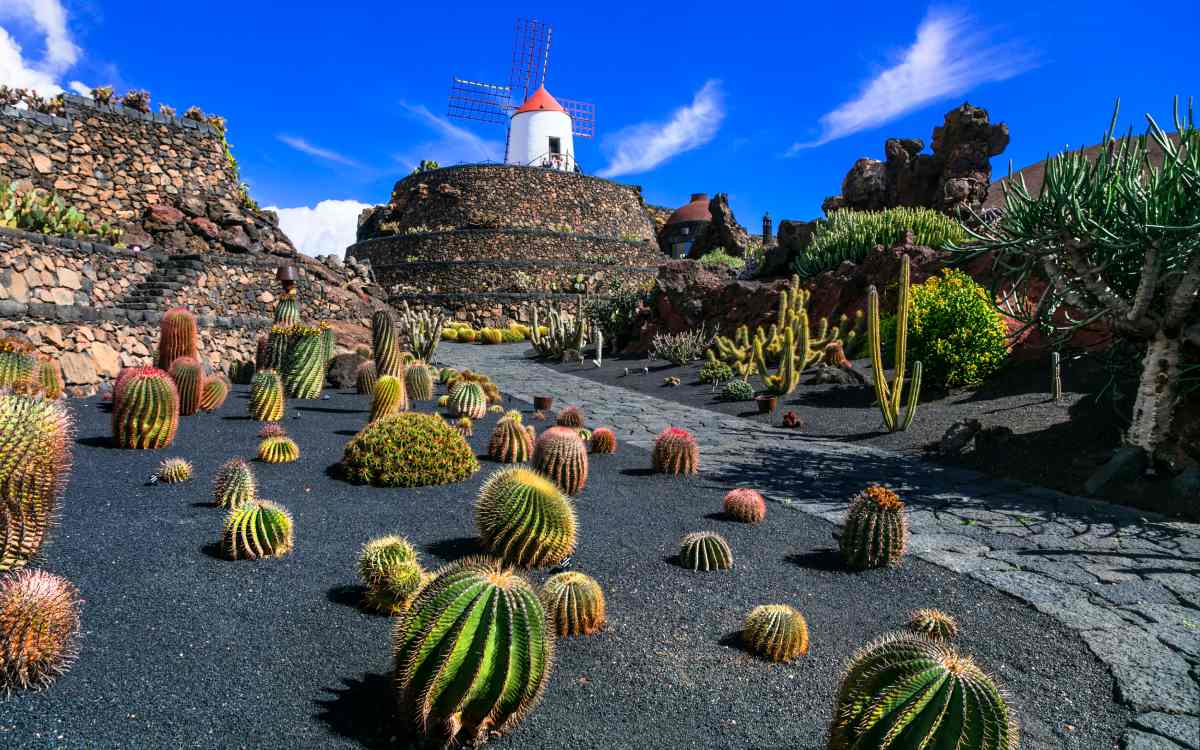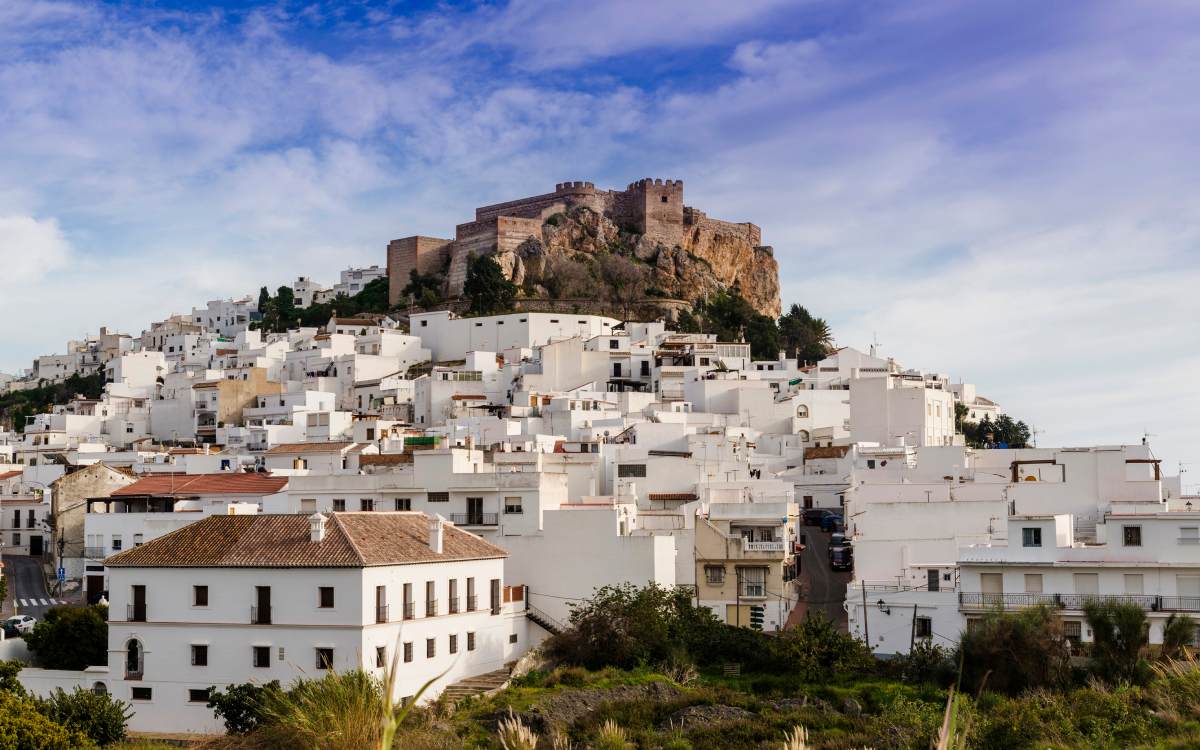
We have all heard of the Spanish winter’s charm. In fact, some Spanish cities look their best during this time of the year. Snow can only be found in some corners of the country, but the search is worth it. However, some people believe that warmth is priceless, and they try to escape from colder areas. No matter what you prefer, every reason to go on a getaway in the first month of the year is perfect. Here are the nine ultimate destinations for a getaway in January.

Lanzarote. | Shutterstock
Canarias’ weather is always spectacular. For this reason, these lucky islands provide a safe refuge for those who run away from the cold. Lanzarote is a great option whenever you decide to travel to Canarias, and January is the best month to visit the impressive badlands of Timanfaya, the island’s charming villages, or César Manrique’s artistic heritage. The water might be too cold to swim, but you should visit the neighbouring island of La Graciosa and enjoy its magical landscapes and breathtaking sky by bike.

Sant Sebastià festivities, Mallorca. | Shutterstock
If you visit Mallorca in January, not only will you avoid the hustle that characterises other months, but you will also be able to live a unique experience: the festivities in honour of the patron saint of the island, Sant Sebastià. They usually take place between the 18th and the 24th of January. Fireworks and barbecues are the main activities involved. Plaza Mayor de Palma is the epicentre of processional giants’ parades, traditional music, and dance. Locals usually bring their own food to popular barbecues. So you should dance, eat, taste the local gin, and enjoy the greatest regional festivity on the island.

Patio de los Naranjos in the Great Mosque of Córdoba. | Shutterstock
The weather in many cities can get extreme in January, but Córdoba isn’t one of them. In fact, visiting the old Andalusí capital at this time of the year can be a better idea than doing so in the summer, when temperatures get very high. Besides, you’ll be able to witness the splendour of Córdoba’s orange trees. January is the best time to explore the Great Mosque of Córdoba, the Medina Azahara site, or the Alcázar de los Reyes Cristianos.

Arán Valley. | Shutterstock
This Pyrenean corner is surely unique. Its villages and valleys are displayed in a characteristic way, but there is more to it: it even has its own language, aranés. This region is the only one in Cataluña to lie in the northern area of the mountains. Besides, its climate is deeply influenced by the Atlantic Ocean. The charm of many villages, such as Arties, Salardú, or Bagergue, multiplies in the winter when the snow says hello and turns this area into a fairytale-like setting. The snow is a great attraction for skiing lovers, who will find in Baquèira a great spot to perform their favourite winter sport.

Tamborrada. | Shutterstock
San Sebastián holds its entertaining festivities in January as well, specifically on the days near the 20th of this month. It’s a great excuse to visit one of Spain’s most cherished cities. Tamborrada is probably the most renowned celebration. For this occasion, people play drums non-stop for 24 hours. To look at people’s clothes, whether they are military or students, is a singular experience. But so is eating delicious pintxos or tasting good txacoli!

Salobreña. | Shutterstock
Granada’s coastline is known as Costa Tropical thanks to its nice weather. Its mere name invites you to spend a few days at its beaches. Besides producing excellent avocados and mangoes thanks to its fortunate weather conditions, sheltered by the wind of the Sierra Nevada, this area is the perfect corner to enjoy a getaway of sun and warmth. The typical beaches of this region can be found in localities such as Almuñécar, Motril, or Salobreña, places filled with tiny white houses and thousands of years of history to learn about.

Morella. | Shutterstock
Located in the area of Maestrazgo, Morella’s medieval layout is the perfect winter postcard. If you are lucky enough to visit it on a snowy day, it will become one of the best landscapes you will ever see. The silhouette of this village and the rocky mass where its castle stands are two of the most characteristic pictures in the Community of Valencia. Thanks to its great beauty, this walled village was declared a Historic-Artistic Complex. This area between Castellón and Teruel is linked to the Knights Templar, whose monks ruled over these lands in the Middle Ages.

Alcázar of Segovia. | Shutterstock
Nothing suits Segovia like winter does, and January can be the ideal time to explore the city. When it’s snowy, this city looks straight out of a fairy tale, thanks to the seductive shapes of the Alcázar, the true Snow White castle, and the magnificence of its famous aqueduct. Although it can get very cold, the local gastronomy can help beat it. Don’t forget to taste the renowned Segovian suckling pig.

Albarracín. | Shutterstock
If sub-zero temperatures aren’t enough of a challenge for you, Albarracín saves its best side for January. This village, which is actually one of the most beautiful villages in Spain, is perfectly adapted to the cold. Everything from the wide walls of its homes to the town’s layout invites people to stay here. Wandering around the labyrinthine medieval town of Albarracín and enjoying its historic heritage is a must. Do not forget to admire its walls, its cathedral, and the popular architecture of its famous Casa de la Julianeta.
You can also read this article in Spanish here.